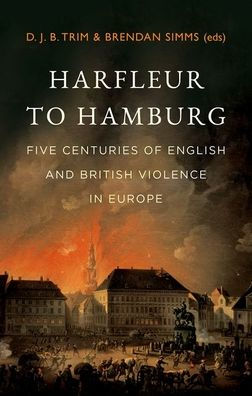Home
Harfleur to Hamburg: Five Centuries of English and British Violence Europe
Barnes and Noble
Harfleur to Hamburg: Five Centuries of English and British Violence Europe
Current price: $59.99


Barnes and Noble
Harfleur to Hamburg: Five Centuries of English and British Violence Europe
Current price: $59.99
Size: Hardcover
*Product information may vary - to confirm product availability, pricing, shipping and return information please contact Barnes and Noble
Britain has historically been seen as an upholder of international norms, at least in its relations with western powers. This has often been contrasted with the violence perpetrated in colonial contexts on other continents. What is often missed, however, is the extent to which the state with its capital in Londonfirst England, then Great Britaininflicted extreme violence on its European neighbors, even when still using the rhetoric of neighborliness and friendship.
This book comprises eleven case-studies of Anglo-British strategic violence, from the siege of Harfleur in 1415 to the fire-bombing of Hamburg in 1943. Chapters examine actions that were top-down and directed, and perpetrated for specific geopolitical reasonsmany of them at, or well beyond, the bounds of what was sanctioned by prevailing international norms at the time. The contributors look at how these actions were conceived, executed and perceived by the English/British public, by the international legal community of the time, and by the victims.
This history of English violence in Europe complicates not only easy notions of England/Britain as a champion of the "standards of civilisation" or of the "liberal international order", but also of the supposed distinction between "European" and "extra-European" warfare.
This book comprises eleven case-studies of Anglo-British strategic violence, from the siege of Harfleur in 1415 to the fire-bombing of Hamburg in 1943. Chapters examine actions that were top-down and directed, and perpetrated for specific geopolitical reasonsmany of them at, or well beyond, the bounds of what was sanctioned by prevailing international norms at the time. The contributors look at how these actions were conceived, executed and perceived by the English/British public, by the international legal community of the time, and by the victims.
This history of English violence in Europe complicates not only easy notions of England/Britain as a champion of the "standards of civilisation" or of the "liberal international order", but also of the supposed distinction between "European" and "extra-European" warfare.













